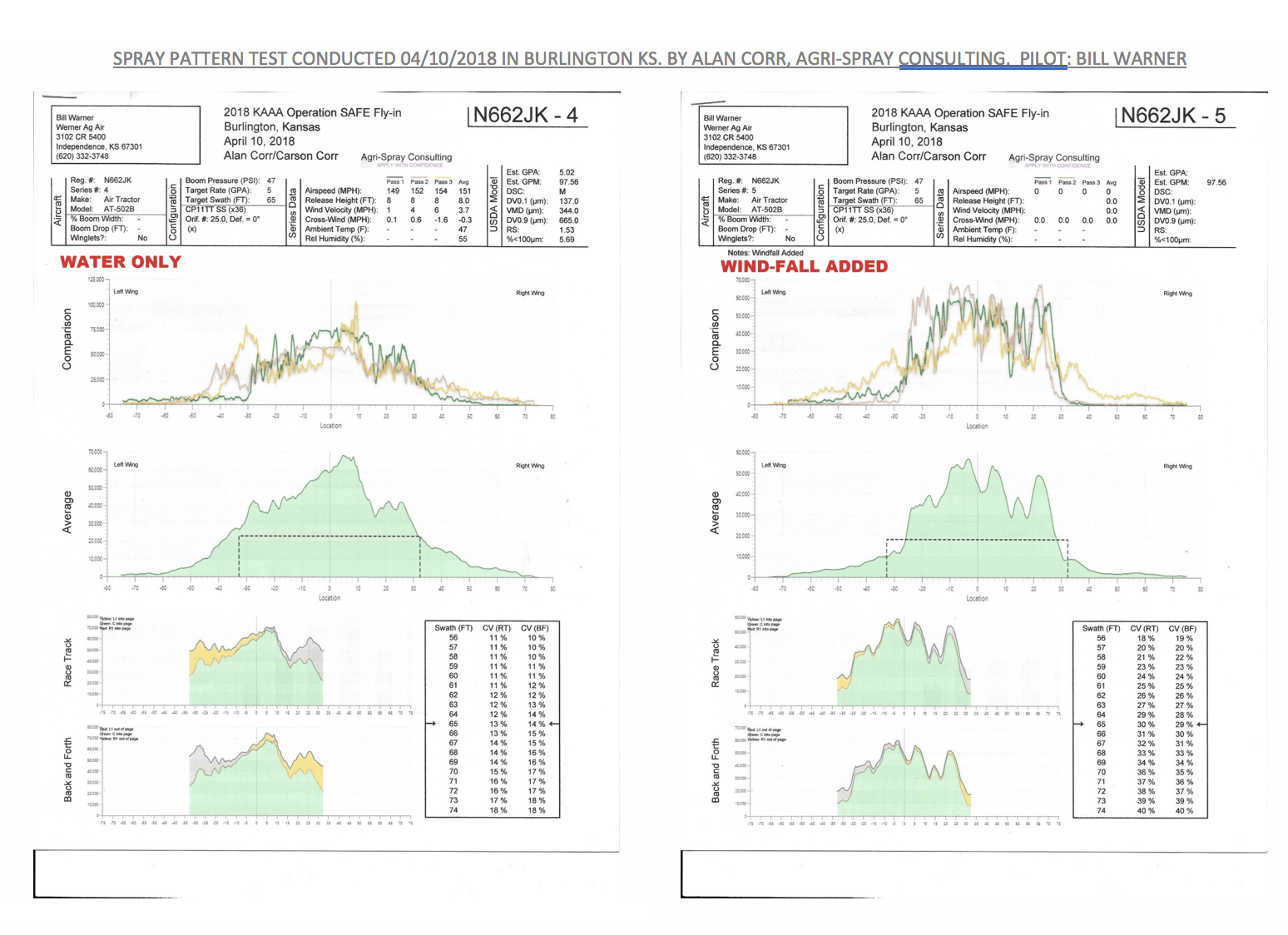SPRAY PATTERN TEST
Spray Pattern Test Analysis
ASTM Report Analysis
On April 1, 2018 at 9:05 AM DENNIS GARDISSER <dgardisser@wrkofar.com> wrote:
I reviewed the “Psysico-Chemical Properties, In-flight evaporation and Spread of Spray Droplets Containing Pesticide Adjuvants” as you requested. I will summarize my thoughts in the following bulleted format:
1. This appears to be a very good study done by some very knowledgeable scientists. Credibility wise - it should be very good. Many times consumers are leery of company generated data.
2. Obviously Windfall faired very well in the tests for both coverage and evaporation reduction. These are both excellent qualities for application efficacy and environmental stewardship.
3. The results of this study should be a great tool for prediction of spray application performance for ground based applications.
4. The study is quite limited on droplet size(s) reviewed. the upper limit was 200 microns - which is the size that most applicators try to stay above for evaporation reduction and drift potential. Small droplets have a much greater surface area per unit volume than their larger counterparts.
5. Most of the data in this report should not be used to imply performance in any aspect of aerial applications. A wind tunnel study similar to this to determine what happens to droplets exposed to high shear would be needed for evaluation from aircraft applications.
6. The reduction in evaporation potential should be a benefit to any application and help avoid increasing drift potential of smaller droplet spectrums due to inflight evaporation.
7. The spread factor for Windfall on WSP is very similar to water - which would allow comparisons on depositions with both on WSP at Operation SAFE clinics to have excellent correlations. Since these are close - DropletScan readings from water vs Windfall taken under actual aircraft application simulations should provide an excellent way to demonstrate application efficiencies.
DENNIS GARDISSER
153 92nd W, Lonoke AR 72086
dgardisser@wrkofar.com
(501) 676-1762
"Click to View ASTM Study on Ground Spray Evaporation and Spread with various Adjuvants"
I reviewed the “Psysico-Chemical Properties, In-flight evaporation and Spread of Spray Droplets Containing Pesticide Adjuvants” as you requested. I will summarize my thoughts in the following bulleted format:
1. This appears to be a very good study done by some very knowledgeable scientists. Credibility wise - it should be very good. Many times consumers are leery of company generated data.
2. Obviously Windfall faired very well in the tests for both coverage and evaporation reduction. These are both excellent qualities for application efficacy and environmental stewardship.
3. The results of this study should be a great tool for prediction of spray application performance for ground based applications.
4. The study is quite limited on droplet size(s) reviewed. the upper limit was 200 microns - which is the size that most applicators try to stay above for evaporation reduction and drift potential. Small droplets have a much greater surface area per unit volume than their larger counterparts.
5. Most of the data in this report should not be used to imply performance in any aspect of aerial applications. A wind tunnel study similar to this to determine what happens to droplets exposed to high shear would be needed for evaluation from aircraft applications.
6. The reduction in evaporation potential should be a benefit to any application and help avoid increasing drift potential of smaller droplet spectrums due to inflight evaporation.
7. The spread factor for Windfall on WSP is very similar to water - which would allow comparisons on depositions with both on WSP at Operation SAFE clinics to have excellent correlations. Since these are close - DropletScan readings from water vs Windfall taken under actual aircraft application simulations should provide an excellent way to demonstrate application efficiencies.
DENNIS GARDISSER
153 92nd W, Lonoke AR 72086
dgardisser@wrkofar.com
(501) 676-1762
